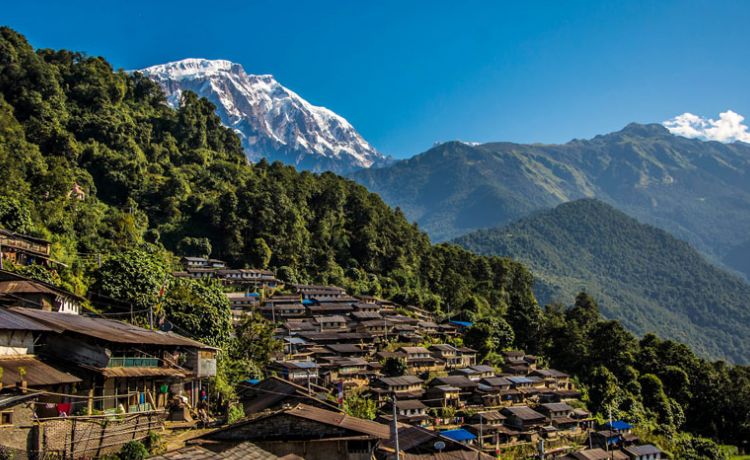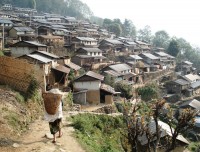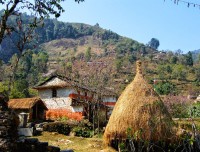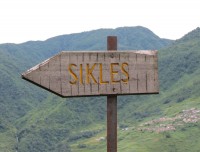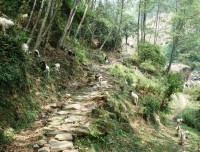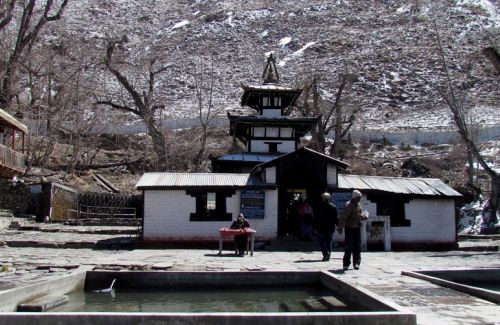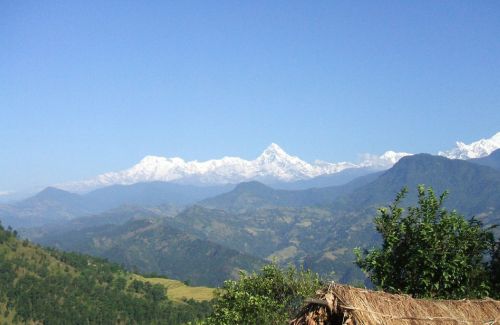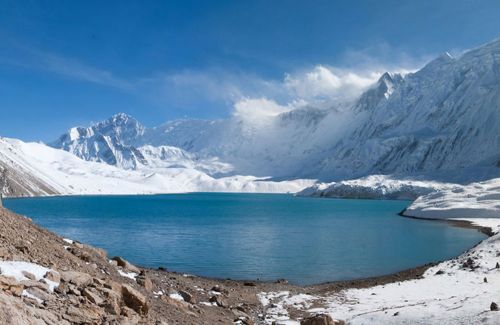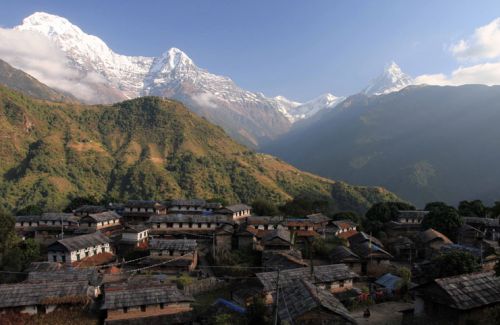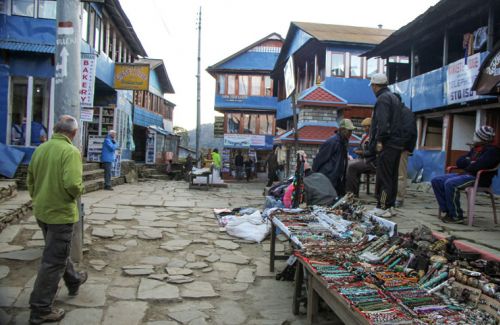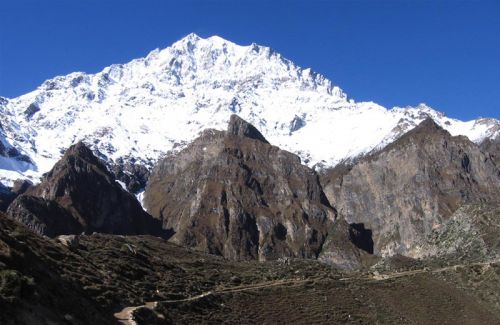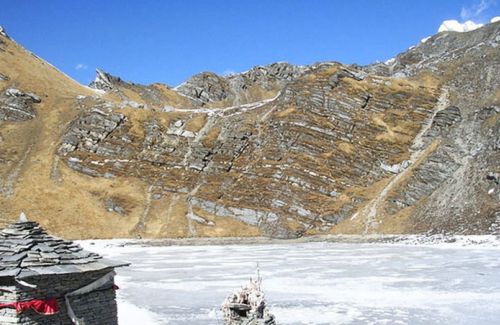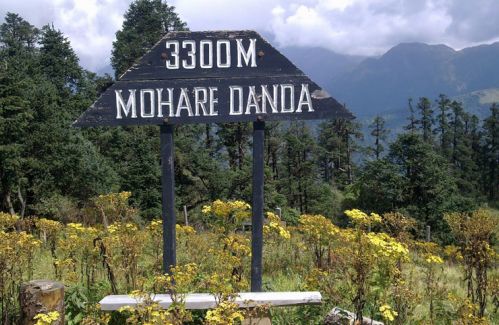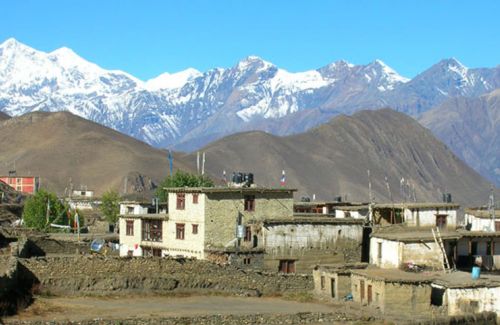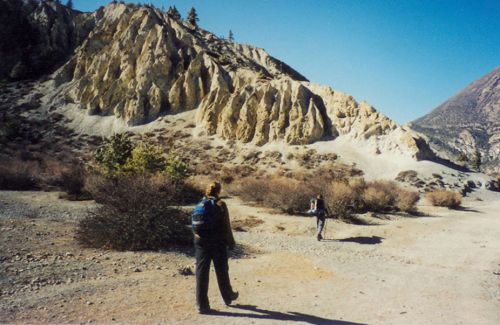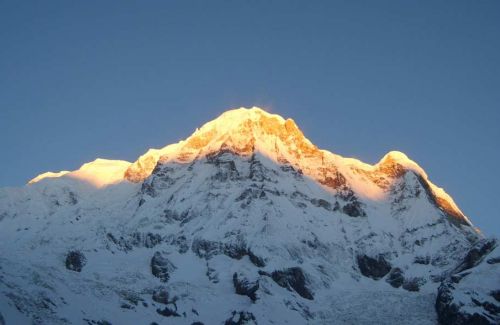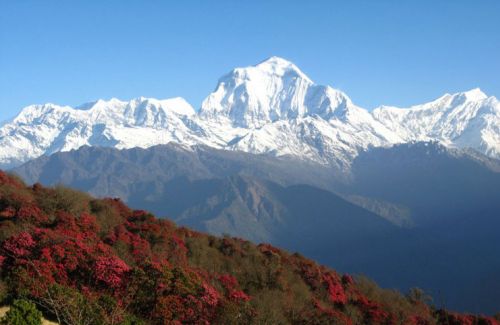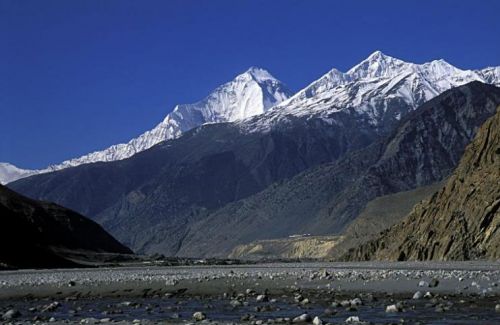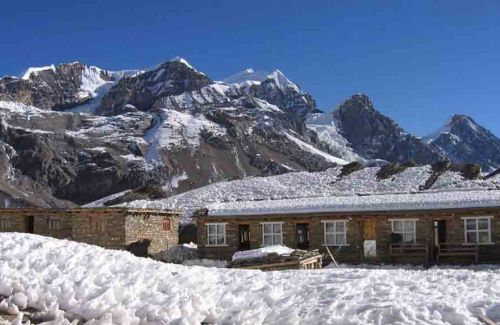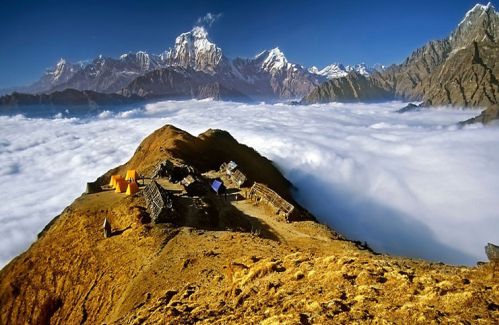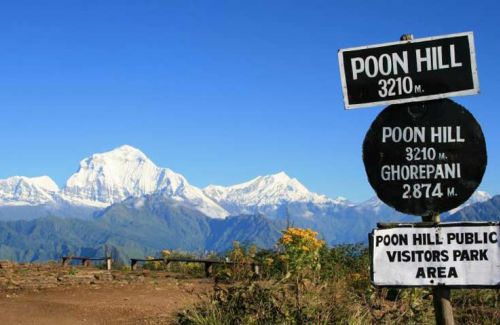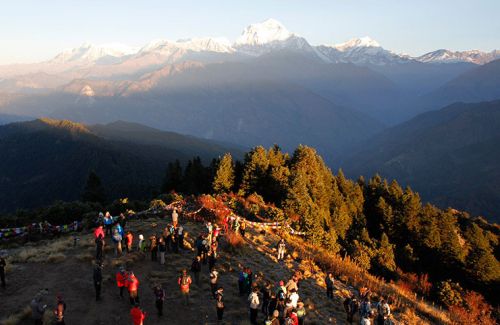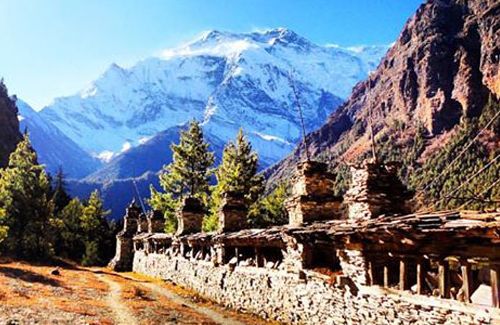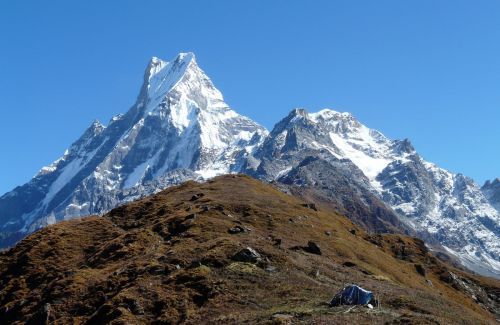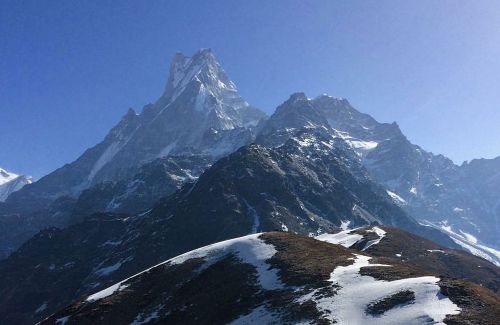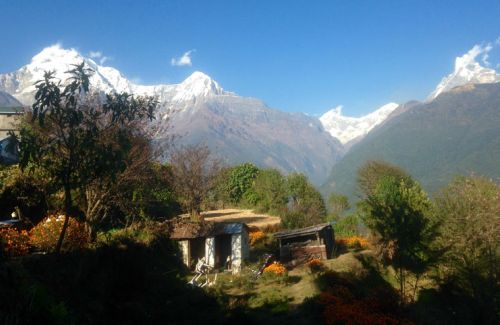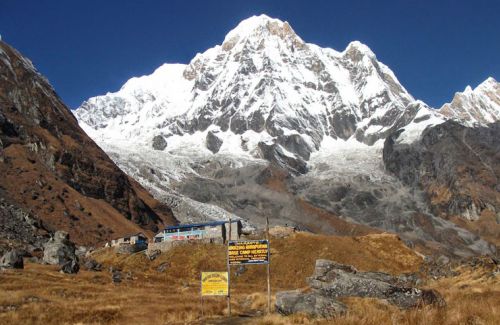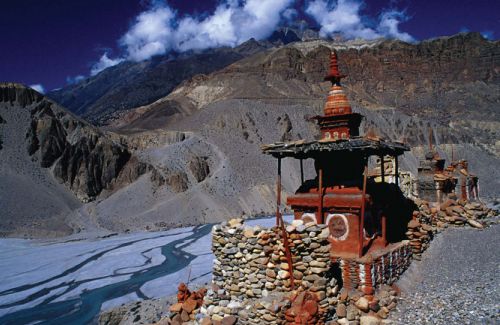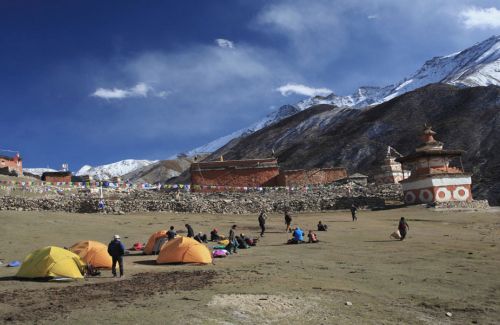Siklesh Trekking
- Duration11 Days
- Max. Altitude2,700 m
- Starts FromUSD 930
Destination:Nepal
Trip Grade:Moderate (**)
Meals:Breakfast + Lunch + Dinner
Transportation:Private Vehicle/Tourist Bus
Accommodation:Lodge + Camping
Starting from:Ghalekharka
Show All
Siklesh Trekking is an easy and overwhelmingly panoramic trekking in the beautiful Gurung village. The place has reflected the beauty of the Annapurna range and the Buddhist Gurung culture. Siklesh Village is in the north of Pokhara valley. Siklesh Village is the largest Gurung village having 700 households. Village Siklesh can be taken as the role model for the practice of sustainable eco- tourism. This village is in the central part of the Annapurna Conservation Area.
This is the best place to explore the natural beauty and to experience the culture and life style of indigenous Gurung people. Siklesh Trek is an ideal trek for elderly people, families with kids and the younger ones.The enthralling view of Annapurna range, Fishtail, Lamjung Himal and Mardi Himal from Siklesh are never deleted from your memory. This is also the paradise for the birdwatchers. If you would like to trek from the terraced fields to the high alpine meadows, then choose the trek Siklesh to captivate all its charming beauty.
Trip Highlights
- Sightseeing in historical sites in Kathmandu
- Scenic drive from Kathmandu-Pokhara-Kathmandu
- Amazing view of Dhaulagiri and Annapurna ranges
- Exploring the different communities’ culture
- Fully supported Tented Camp Trekking
Day to Day Itinerary
Day 01:Arrival in Kathmandu Tribhuvan International Airport (1,350 m) & Transfer to the Hotel
Day 02:Sightseeing around Kathmandu valley & trek preparation. Overnight at Hotel
Day 03:Scenic drive to Pokhara from Kathmandu by tourist coach, 6 hrs. Overnight at Hotel
Day 04:Half an hour drive to Bhurjung Khola and Trek to Ghalekharka (1,670 m),7 hrs. O/N at Tented Camp
Day 05:Trek from Ghalekharka to Tara hill Top (2,700 m), 6 hrs. Overnight at Tented Camp
Day 06:Trek from Tara Hill Top to Siklesh Village (2,000 m), 6 hrs. Overnight at Tented Camp
Day 07:Trek from Siklesh Village to Chansu (990 m), 6 hrs, Overnight at Tented Camp
Day 08:Trek from Chansu to Bayarghari (930 m), 3 hrs, and then drive back to Pokhara.
Day 09:Sightseeing in Pokhara Valley. Overnight at Hotel
Day 10:Drive back to Kathmandu by tourist coach. Overnight at Hotel
Day 11:Transfer to Tribhuvan International Airport
Cost Include
- Airport picks up & drops by private tourist vehicle
- 3 nights in Kathmandu and 3 nights inPokhara, twin sharing basis in 2-3 star hotels with Breakfast
- Guided city tour in Kathmandu and Pokhara by private tourist vehicle
- A government licensed holder city Tour Guide
- Drive from Kathmandu - Pokhara - Kathmandu by Tourist Coach
- Drive from Pokhara to Bhurjung Khola and from Bayerghari to Pokhara by local vehicle
- Full Board Meals (Breakfast + Lunch + Dinner) during the trek
- Professional license holder English speaking Trekking Guide
- Tented Camp accommodation in trekking
- All required tented camping equipments by Himkala Adventure Pvt. Ltd.
- The required number of local staff and porters during the trek (2 Trekkers = 1 Porter)
- Food, accommodation, salary, insurance, equipment and medicine for all staff
- Annapurna Conservation Area Entry Permit and TIMS card for trekking
- Down Jacket, Duffle bag and sleeping bag by Himkala Adventure (if required)
- Farewell dinner in traditional Nepali Restaurant with Nepali Cultural Show
- All our government taxes, VAT and Service charges
Cost Exclude
- Lunch and dinner in Kathmandu and Pokhara
- Entrance fee in all monuments during tour in Kathmandu and Pokhara
- Emergency Rescue and Evacuation cost
- Your Travel insurance
- Nepal Entry Visa fee which can be issued on your arrival at Tribhuwan International Airport
- Other personal expenses
- Personal trekking Equipment
- Tips for trekking, tour staff and driver (Tipping is expected)
- Any others expenses which are not mentioned on ‘Cost Includes' section
Detail Itinerary
Day 01Arrival in Kathmandu Tribhuvan International Airport (1,350 m) & Transfer to the Hotel Upon your arrival at Tribhuvan International airport, our representative from Himkala Adventure greets you when you come to the entrance after the completion of custom formalities. Then you will be transferred from airport to the hotel at Thamel which is 5 km and 20 minutes drive from the airport. After check in hotel, it is up to you either you could take rest to get rid of from jetlag or stroll around Thamel. Overnight at Kathmandu
Day 02Sightseeing around Kathmandu valley & trek preparation. Overnight at Hotel After breakfast, we prepare for the city tour in the historical monuments which are listed in the UNESCO World Heritage Sites. We can visit the grandeur stupa where the monks and nuns are circumambulating the stupa chanting ‘Om Mani Padme Hum’ spinning the prayer wheel. There are many monasteries intricately decorated. The image of Shakya Muni Buddha and other Lokeshworas and Taras have sparkled the Gumbas. The candle lamp offering in the memory of their deceased one or wishing for the good in the family seem the true cultural scenes here. We can visit palaces, museums, courtyards, and walk through the narrow stone paved streets. This reflects the traditional settlement of the medieval ages. Anyway, the traditional Hindu and Buddhist practices are found in today’s activities too. After visiting sites full of artistic craftsmanship and architecture, we return back hotel and brief you about the Siklesh Trekking that we begin from tomorrow. Overnight at Kathmandu
Day 03Scenic drive to Pokhara from Kathmandu by tourist coach, 6 hrs. Overnight at Hotel We drive from Kathmandu to Pokhara after breakfast. It is 200 km west from Kathmandu through many streams, rural settlements. We follow the popular Trishuli River for the rafting which is best rafting destination for the beginners as well. We can have lunch in any highway restaurant we like. After passing Khairenitar, we can have clear view of Annapurna Massif on the way to Pokhara. Overnight at Pokhara
Day 04Half an hour drive to Bhurjung Khola and Trek to Ghalekharka (1,670 m),7 hrs. O/N at Tented Camp Today, after breakfast, we again drive half an hour from Pokhara to Bhurjung Khola. It is about 12 km far from Pokhara Bhurjung Khola is on the lap of Annapurna and Machhapuchhre mountains. It is about 1,219 m high from the sea level. From Bhurjung Khola, we climb up hill to the Ghale Kharka where there is Ghale settlements. The majestic view of mountains can be seen from here. Overnight at Ghale Kharka
Day 05Trek from Ghalekharka to Tara hill Top (2,700 m), 6 hrs. Overnight at Tented Camp After breakfast, we climb steeply to Tara Hill. We go through the rhododendron forest. After 4 hours of continuous walk, we take our lunch and further go high up to the Tara Hill Top. Finally we hit the ridge of Tara Hill Top which is the vantage point for the view of Annapurna Range and Lamjung Himal. Overnight at Tara Hill Top
Day 06Trek from Tara Hill Top to Siklesh Village (2,000 m), 6 hrs. Overnight at Tented Camp After breakfast, we head downhill passing through rhododendron forest. The fragrance of Daphne, along the trail makes our trek pleasant. As we keep heading downhill, we join the main trail to Siklesh and leave off the beaten track. After we take lunch in the small hut, we continue our trek gently downhill to Parje. This is an attractive Gurung settlement. We enjoy the evening program conducted by the Aama Samuha (Mother’s Group) who performs Nepali songs and dances. Overnight at Siklesh Village
Day 07Trek from Siklesh Village to Chansu (990 m), 6 hrs, Overnight at Tented Camp After our visit to Siklesh Village, we continue our trek overlooking the Madi River with fine views of Annapurna II, IV and Lamjung range. We further follow Madi River south down to Sonda and Chansu (990 m). Overnight at Chansu
Day 08Trek from Chansu to Bayarghari (930 m), 3 hrs, and then drive back to Pokhara. After having breakfast, we trek down to Bayerghari viewing the great landscape, adjacent hills and the scenic Mountain View. After 3 hours trek to Bayerghari, we drive back to Pokhara. Overnight at Pokhara
Day 09Sightseeing in Pokhara Valley. Overnight at Hotel Today, we can hike to Sarangkot early in the morning for the sun rise and view the Fishtail face to face. From there, we can get the amazing view of Pokhara Valley and Phewa Lake. We descend down to the bottom of the hill and go to visit Bindawasini temple. This is the 17th century Hindu temple famous for the ritual activities especially for the marriage ceremony. The temple premise is also an ideal place for viewing the Annapurna range. We return back to hotel and get breakfast. We can take rest for a while and set out for the city tour. We head towards south to Davi’s fall, Gupteshwor cave and Tibetan Refugee Camp. After visiting these places, we return back to Phewa Lake and have lunch in the restaurant on the bank of the lake. After lunch, we go for an hour boating where we visit the Tal Barahi Temple in the little island. Finally we return back to hotel. Overnight at Pokhara
Day 10Drive back to Kathmandu by tourist coach. Overnight at Hotel After breakfast, we return back to Kathmandu by bus. It takes about 7 hours through the scenic rural settlements by the Prithivi Highway. We pass many small streams, terraced paddy fields; follow the Marshyangdi River and Trishuli River at the end. After our arrival in Kathmandu, we are transferred to the hotel. We will join for the dinner in the Nepalese Restaurant with Nepalese cultural show. Overnight at Kathmandu
Day 11Transfer to Tribhuvan International Airport We depart you to the International airport 3 hours before to your scheduled flight. You could utilize the leisure time doing shopping around. We escort you to the airport, show our gratitude that you joined to Himkala Adventure for the Siklesh trekking and leave you there to go ahead for the boarding plane. We wish you have safe journey to the onward destination. Namaste!!!
Trip FAQ
Himkala Adventure would like to quench the thirst of all necessary questions answers about Siklesh Trekking for all curious travelers/trekkers in the world. As you are entirely from different geographical location, you could better to know everything about the treks from the beginning i.e. airport pick up till your departure like airport picks up, drops off, accommodation in city, in the trek, guide and porters, safety for the trekking, food and accommodation and some other things that you might face on the way. Hope our endeavor listing these questions answers will help you self informed.
This is simply the outlines of the services we offer but it may differ as per your requirement, number of trekkers. What we go through our conversation, we will manage the means of transportation, hotels in the city, accommodation in the trekking, numbers of porters etc. This is general idea about Siklesh trekking before your trip and you become clearer about the trek. Please feel free to contact us to get more information about the trekking in the Himalayas of Nepal.
1) How is Siklesh Trekking in Nepal?
Siklesh Trekking is an alternativer trekking trail of Annapurna Region in the western part of Nepal.The trail of Siklesh trekking reaches up to 2,700 m from the sea level. It is a moderate trek and can be done by anyone. Siklesh Trekking offers the beauty of the Annapurna ranges and the Buddhist Gurung culture. Siklish is one of the largest Gurung villages in Nepal. It is a model village in the central part of the Annapurna Conservation Area (ACA).
2) What physical fitness do I need to book this trip?
Every trekking in the Himalayas of Nepal require the certain level of physical and mental fitness.So, we advise you to be in good physical shape and able to feel comfortable while hiking up and down 7 to 12 miles per day on a trail carrying a day pack of about 10 pounds. Three things could make you confident enough for any trek you would like to do: aerobic, strength and mental.
Aerobic conditioning is important primarily because you will be trekking in thinner air, up to 40% less than at sea level. With good aerobic conditioning, you will be able to better metabolize whatever oxygen is available to you. You should plan on doing at least one hour of aerobic 3 /4 times per week for 1 month or more before your arrival in Nepal. Walking, jogging, cycling, hiking on valley floor to ridge line ascents with day back are some of the excellent forms of exercise, so long as you are strengthening leg muscles and building stamina. Speed is not the essence; stamina, confidence and continuity are.
3) How do I find Himkala Adventure for my pick up at the airport?
Our representative from Himkala Adventure will display a small board of company or your name on the sheet of paper outside the airport terminal. You will be driven to the hotel by our tourist vehicle.
4) What sort of accommodation do I get in Kathmandu and Pokhara ?
Normally we provide standard rooms with twin sharing accommodations at three star or similar category hotels in Kathmandu and Pokhara including breakfast. Accommodation in these cities can be upgraded as per your request. But some of our packages are sold without accommodation in the city.
5) How is camping trek during Siklesh Trekking?
Camping trek to Siklesh Village is fully organized and supported, with a team of guides, cooks, and porters to accompany you. Our porters carry all the trekking gear, food, fuel and personal belongings. Our cooks prepare hot meals. Trekkers need only carry a small bag as required for the day. At night, tents for dining, sleeping and ablutions tents are provided and set up, also mattresses and down-filled sleeping bags, tables and seating.
In a typical camping trek, we start the day around 6 a.m. with a cup of hot tea. You are then provided with a bowl of warm water for washing. Then trekkers enjoy breakfast before leaving camp. The trek begins around 7.30 - 8 a.m.Trekkers can set their pace for pausing and sightseeing and the walk to the lunch spot will normally take 3 hours. On arrival, you are served hot lunch. In the afternoon, after walking for another 3 to 4 hours, you arrive at the next camp around 5 p.m. Tea & snacks are served while our staff readies the camp. Dinner time is around 6/7 p.m. in the dining tent, lit with lanterns and comfortably furnished. The food is healthy, wholesome and hygienically prepared.
6) What mode of transportation do I use?
We will provide the private transportation for Airport/Hotel/Airport pick up and drop and sightseeing in Kathmandu Valley. We use transportation as based on our cost inclusion section. The transportation varies depending on your requirements at the time of booking the trip.
7) What is the best season for this trekking?
The best season for Siklesh Trekking is spring (March to May) and autumn (September to December). These are the perfect time of the year for the breathtaking views of Himalayas with clear and sunny days. But the weather in the mountains is unpredictable.
8) What is the weather and temperature like during the trekking?
The climate in Nepal varies from place to place which can be categorized in different four main seasons. The main seasons in Nepal are spring (March to May), summer (June to August), autumn (September to November) & winter (December to February). The best season to travel in Nepal is autumn (September, October & November) & spring (March, April & May). Weather in the mountains is unpredictable. But the day temperature in Siklesh Trekking is comfortable.
9) Who will be guiding me during this trip?
We provide the professional government license holder English speaking trekking guides for our entire trekking trip. We can also provide French, Spanish, Japanese, German or Italian speaking guides as per your preference with extra payment but not guaranteed. All guides will be Nepali people who are carefully selected on the basis of their appropriate experience, leadership skills and personality. They are all trained from Nepal Academy of Tourism and Hotel Management, certified and approved by the Tourism Department of Nepal government. We provide a different city tour guide to guide you in UNESCO World Heritage Sites in Kathmandu. They are the professional license holder guide specialized in culture, history, geography, iconography, archeology and religion with good command over English. Tour guides are specialized in city tour and trekking guides are more in the hiking and trekking in the Himalayas.
10) What sort of experience do your guides have?
Our entire city tour guides have bachelors to Master Degree academic education along with many months tour guiding training from Nepal Academy of Tourism and Hotel Management, Rabi Bhawan, Kathmandu, Nepal. They are fluent in spoken languages and informative about the sites in many aspects. They are quite experienced and dedicated to their job and responsibilities.
Our entire trekking guides have minimum Intermediate to Master Degree academic education with trekking guide training from Nepal Academy of Tourism and Hotel Management, Rabi Bhawan, Kathmandu, Nepal. Many of them are from villages. As they are local, they know more about the routes, necessary precaution to be taken and so on. They have spent many years exploring many parts of the country. They are trained in first aid and able to handle any situation easily. They speak good English and make you know about the places you visit.
11) May I charge my electronic gadgets during Siklesh Trekking?
This is fully camping trek, so we may not be nearby any settlements. You could better manange extra battery or any other alternatives.
12) What is the social and environmental responsibility of Himkala Adventure for this trip?
The situation of environment in Nepal is in considerable stage due to so many factors caused by global warming, human activities, and adverse effects of natural incidents. Nepal is in between two giant countries like China and Nepal. The ozone layer is depleting and the atmosphere is getting heated. So, its direct effect is to the Himalayas that the snow is melting day by day and the sea level is rising. It is due to population growth, people are clearing the forest and the soil is being eroded. As a part of society, and our trekking related activities are directly concerned with the social and environmental things. We are very conscious not litter in the open spaces, to manage garbage properly and make local people aware in this campaign. We are working together with other companies and taking these issues seriously.
13) What is the minimum number requirement for this trip?
We operate individual trip to the group joining trips for Siklesh Trekking. If you want to do any private trip we are ready to organize for solo traveler as well with some additional charges.
14) Are there communication or internet services during Siklesh Trekking?
We highly recommend taking local SIM card for call and internet services during trekking. Local SIM cards are easily available in many stores and at airport as well. You need to provide two copies of your photographs and your passport copy to get local SIM CARDS of NCELL & NTC (only these two companies provide telephone services in Nepal
15) May I add extra days in trekking?
We are ready to operate your holidays as per your interest and requirements. You can spend extra days on your loving or favorable places or even can make it shorter. We will always do our best to manage your hotel bookings, flight booking and everything.
16) What happens in case of emergency?
Himkala Adventure has prepared for any emergency situation and knows how to handle it. Our guides are trained in first aid and can deal with most of the basic ailments that occur during the trek. Every client should have his own insurance before coming to Nepal for the case of emergency.
17) Do I need to have insurance for this trip?
We request you to have a travel-insurance policy to cover theft, loss, medical problem & emergency helicopter evacuation from high altitude places before coming Nepal. Choose a policy to cover your emergency high altitude helicopter evacuation with all medical insurances for trekking in high altitude in the Himalayas of Nepal. Your travel insurance is always needed before going in any high altitude trekking. Please check your travel insurance policy which doesn’t exclude mountaineering or alpinism. Although you will not be engaging in these activities in your trekking, you might have problem convincing the insurance company of this fact. Rescue insurance need to cover an emergency helicopter evacuation or a charted flight from remote mountain trails of Nepal as well as international medical evacuation. A helicopter evacuation might cost US$ 2500 to US$10000 depending on the places. So that travel insurance to cover all above is must to travel in the high Himalayas of Nepal
18) What type of shoes should I wear during Siklesh Trekking?
You could better have carefully chosen hiking boots with extra laces and camp shoes, which should be kind of strong, well-made but light boots for Siklesh Trekking. Shoes and boots are best to buy before arriving in Nepal. We advise you to wear your new shoes for sometime before trek so that you could feel well habituated on the newer trail for your feet.
19) Can I use credit cards in the Siklesh Trekking?
Of course not, you can use only in the cities like Kathmandu, Pokhara but not in Siklesh Trekking route. When you are out of city, all you need is cash, better to have small notes. Please change the currency in local Nepali rupees before you go to the mountains.
20) Do I need to tip my guide and porter? How much would that be?
Tipping is not mandatory, neither it is right to ask by anyone but it is a way of showing gratitude after taking service. The level of tip also shows how satisfy you are from the team that you had been during your tour/trek.However, we recommend you to spend minimum 10% of your total trip cost for tipping entire local staffs, the ratio of tipping guide and porter will be given to you at the pre-trip meeting in Kathmandu before starting the trek.
Trip Note
Cost:
The cost of trip varies according to the number in the group, the category of the Hotel, mode of the transportation and any kind of changes (if there is). So, if you would let us know all of these above mentioned things, then we could quote you the exact price.
Essential Documents:
You are requested to send the following documents after you confirm or book the trip with Himkala Adventure:
A copy of your passport and travel/health insurance documents with contact details, three passport size photos.
It is advised to maintain a separate photocopy of all important documents including traveler’s cheques, bank/ATM card, contact numbers, international flight tickets, and emergency contact numbers.
Weather:
The main trekking season in Nepal is from October to December and March to May but Siklesh Trekking can be done throughout the year. Siklesh village lies north from Pokhara valley.
Nepal Strikes:
There is much more progress in the political scenario in Nepal and we assure you that travelling in Nepal is safe. But there may be Bandha (wide transport strikes) at a very short notice. The shuttle bus is in operation by Nepal Tourism Board and the Nepal Tourist Police in conjunction with the Himalayan Rescue Association from domestic and international terminal to the various hotels in Kathmandu. The service costs 300 rupees per person.
Itinerary Disclaimer:
Himkala has thoughtfully designed all the itineraries but our itineraries are updated for the betterment on the basis of our past travelers’ comments and our own research. In case you find changes in the itinerary you printed and the upgraded one does not affect your trip. Please note that some changes may occur in our itineraries due to bad weather and common seasonal changes to timetables and transport routes.
Physical Rating:
Your trip will be meaningful if you could find yourself fit and fine. You will be walking up to 2,700 m from the sea level.So, we advise you to undertake regular physical exercise, jogging, hiking, riding, ascending and descending the long stairs etc.
Group Size:
Himkala Adventure organizes solo to group travelers. Our group trips are designed for sharing accommodation and there is no single supplement. Single travelers share with the same gender from twin to multi-share in an accommodation. You are requested to have mutual understanding in between the fellow travelers who have joined from the different parts of the world. Please remember that you have great responsibilities in the group. If you are requested to be at a particular place at a certain time, make sure that you have been there at a time. It is much more pleasing sharing experiences and traveling together.
Accommodation and Meals:
Accommodation and Foods in the Hilly region of Nepal cannot be compared with any developed countries in the world. We know that you might not have experienced such things before but you should take it easy. Accommodations at local lodges are simple but clean and comfortable. The food is plain. Toilets and washing facilities are shared and rudimentary.
Money Matters:
Please note that most establishments in Asia will not accept foreign currency notes that are old, torn or faded and they can be very difficult to exchange or extra fees added when exchanging at banks. Please ensure that you have new, clean notes.
The official currency of Nepal is the Nepali Rupee (NPR). ATMs can be found only in major cities of Nepal like Kathmandu, Pokhara, Chitwan, Bhaktapur etc. The government of Nepal has banned the import, export and use of 500 and 1000 Indian rupee notes in Nepal. You make sure that you won’t carry these notes upon arrival in Nepal, otherwise they are confiscated and you may be fined.
Please make sure that the foreign currency notes that you have are new and clean notes because old, torn or faded foreign currency notes in Nepal are very difficult to exchange or extra fees added when exchanging at banks.
While travelers cheques have security advantages exchanging them can be a lengthy process, commissions can be high (up to 10%) and they can be difficult to change in rural areas, on weekends and public holidays. If you choose to bring travelers’ cheques, make sure they are a major brand and major currency.
Tipping:
Tipping is not mandatory. It is not anyone’s right asking for tips but if you are happy with the service, you could tip the staffs. It is entirely a personal preference. Tipping could be significant to them who took take great care of you in your traveling period. Himkala recommends that you could tip any intended recipient by any member of the group than collected and passed on by the group leader.
Note: Please do not tip with coins or dirty and ripped notes. This is culturally taken as an insult.
Local Dress in Nepal:
Nudity is a sensitive issue in Nepal. Women should avoid wearing shorts and sleeveless tops in public places where this might be seen as inappropriate. Remove shoes before entering certain holy places. Non-Hindus are not permitted in some temples.
Feedback:
Your feedback will be the great guidance to meet our target and to bring improvement in our service. What and how have you experienced with Himkala Adventure and our staff? Please write, we will read it carefully. One cannot see his/her shortcomings that are lying with them. Someone should point it out. We are always eager to hear from you.
Trip Info
- Weather
- Trip Grading
- Accommodation/Shelter
- Altitude Sickness
- Communications and Updates
- Conservation
- Cross Cultural Issues
- Essential Do’s and Don’ts
- Foot Ware/Foot Care
- Health and Fitness
- Himkala Crews
- Safety and Security
- Travel Insurance and Evacuation
- Trip FAQs
- Washing and Shower
- Water/Food and Nutrition
- Equipment List
